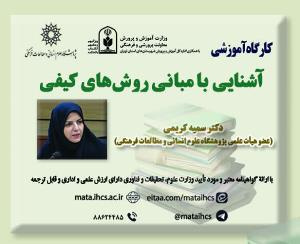تصاویر برساخته از مرگ یزدگرد، رستم فرّخ زاد و ماهویه در کشاکش گفتمان ها (مقاله علمی وزارت علوم)
درجه علمی: نشریه علمی (وزارت علوم)
آرشیو
چکیده
نگارند گان در این پژوهش بر آن هستند که با پیش کشیدن مرگ یزدگرد، ماهویه و رستم فرّخ زاد در شاهنامه و سنجش آن با منابع تاریخی پیش از آن، هم دوره و پس از آن، به بررسی عناصر ایدئولوژیک و جهت دار در آن ها بپردازند. با این بررسی نقش نویسنده و گزاره ها در مناسبات قدرت معین می شود. به شکلی که هم خودِ نویسنده و شاعر و هم خودِ اثر به مثابه کرداری اجتماعی، برساخته مناسبات قدرت و تخاصمات اجتماعی و سیاسی آن دوره بر سر تثبیت گفتمان و معنای وابسته به آن هستند. این امر منجر به قطبی شدن گزاره های به کار رفته توسط نویسنده و شاعر می شود. نویسنده این قطبی شدن ها را بر روی بستری از غیرسازی ، برجسته سازی و حاشیه رانی انجام می دهد. با وجود این، نباید در پی صدق و کذب بودن این روایت ها باشیم؛ بلکه باید آن ها را به عنوان متن های ایدئولوژیک مورد توجه قرار داد. ما از راه برخورد و رویارویی این عوامل، هوّیت متفاوت روایت ها و گزاره های ایدئولوژیک این افراد و آثار را به شکلی عقلانی و اخلاقی درک و دریافت می کنیم.Pictures of death scenes of Yazdgerd, Rostam Farrokhzad, and Mahuy made through discourses
The purpose of this research is to study the biased ideological elements found in the death of Yazdgerd, Rostam Farokhzad, and Mahuy in Shahnameh and to compare it with the historical sources of its time, prior and after it. In this way the role of the author and statements in the power relations are determined in such a way that not only the author himself, or the poet but also the work itself as a social act are the outcome of the power relations, social and political antagonism of that period in order to establish a discourse and the meaning it entails. This subject leads to the polarization of the statements used by the author who does this polarization in a context of otherness, foregrounding, and marginalization. Although one should not be concerned with the truth and falsity of the narratives, instead they should be treated as ideological texts. By confronting these elements we perceive the different identity of narratives and ideological statements of the authors and their works in a logical and moral sense.







